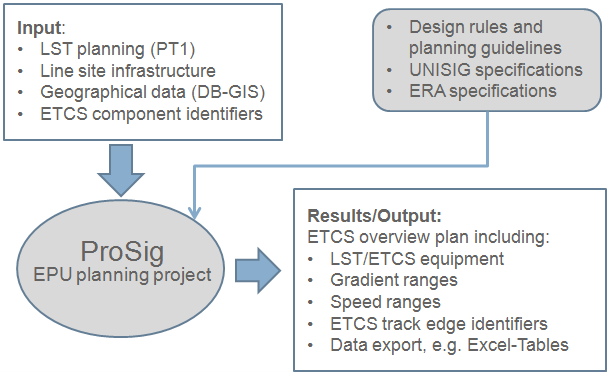ETCS Level 2 Planning
In the late 1980s, various research programs and studies involving various interest groups (UIC/ERRI, ERTMS, UNISIG, etc.) focused on the standardization and harmonization of European railways. The common goal is to develop the feasibility and definition of a unified European train control system.
Based on this, the standard for continuous cross-border rail traffic without downtime is defined - namely, the European Train Control System (ETCS).
ETCS is an integral part of the European Rail Traffic Management System (ERTMS). With the help of this definition, manufacturing industries can advance the development of ETCS-compliant products. Another integral part of ERTMS is the definition of EURORADIO (GSM-R).
By agreeing to the EU Directive, the EU member states have pledged to enact national laws that make ETCS mandatory for new route planning. In Germany, for example, all new routes planned after 1 April 1999 have to be equipped with ETCS.
The definition of ETCS comprises a number of different stages to meet the challenges posed by different railway routes, usage profiles and railway administrations. As a result, we have ETCS Levels 0 to 3.
The Planning of ETCS Level 2 is based on a PT1 Planning created with ProSig in a ProSig project.
To Setting up a planning project, proceed in the same way as for the EPU section. For the planning of ETCS Level 2, additional settings are required in the project.
In order to utilize ETCS Level 2 planning functions, it is necessary to generate the track topology and locate the equipment along the topology.
For more detailed information, please refer to SCT Planning. In this context, special attention is paid to the sections Creating a Planning Basis and Equipment Planning in the EPU Planning Process.

Illus.: Requirements and results for planning ETCS Level 2 with ProSig
The Help document has the following topics:
•Directives and Planning Specifications
